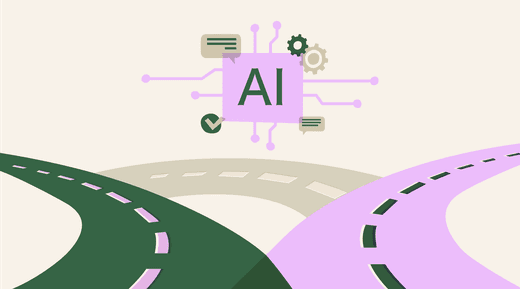Bijal Shah |
A Resilience Economy is beginning to take shape — and early signals suggest that success in this new era will depend on our collective ability to continuously learn and apply complex skills.
For HR leaders and the people they lead, this means rethinking talent and learning strategy from the ground up. Clinging to old playbooks will mean falling behind. But those who adapt — who reimagine how they hire, develop, and lead — will unlock entirely new levels of performance and growth.
Drawing from proprietary data, recent research, and conversations with leaders across industries, we’ve identified five emerging shifts already reshaping work, workers, and the workplace. Each carries meaningful implications for how organizations design talent strategy for the decade ahead.
Shift 1: Talent strategy = business strategy.
Historically, talent development lived in silos, dispersed across HR, learning-and-development (L&D), and business units, each with its own mandates and metrics. But in the Resilience Economy, this fragmentation will become a liability. Instead, talent development must be a fully integrated part of business strategy.
This means aligning upskilling and reskilling efforts with revenue goals, linking leadership development to succession pipelines, and ensuring that frontline learning initiatives tie directly to performance outcomes. A recent Guild survey of 500 CHROs and L&D leaders revealed that leaders who align learning to their organization’s business strategy are 122% more likely than their peers to meet high-priority metrics.
To make this real, capability-building must be embedded across teams and reinforced by leaders at every level, starting with the C-suite.
Resilience is emerging as one of the most meaningful signals of long-term business performance. According to proprietary Guild research, only 36% of organizations report meeting resilience-related KPIs. Of those that do, 90% credit their learning-and-developments investments as a contributing factor.

Shift 2: The most valuable learning is designed with clear purpose and application.
Many learning programs offer content without context, and courses without career paths. That approach simply won’t work in the Resilience Economy.
The most effective talent strategies today and in the future will be deeply intentional — designed around real needs for the business and for workers. More than 80% of Guild Learning Marketplace learners (excluding foundational learners) are enrolled in pathway-aligned programs, underscoring the power of making next steps visible.
We see this shift take shape in how programs are designed and delivered.
Take Rio Salado College’s Nursing Start program, created with input from Guild to enable an accessible on-ramp into nursing careers. Designed specifically for working adults — many without prior college experience — the program allows learners to explore the healthcare field while fulfilling nursing prerequisites.
In manufacturing, programs developed with Purdue Global offer stackable pathways for entry-level production workers, using online coursework, simulations, and transferable credits to make skill-building more accessible and career advancement more attainable.
These are examples of a real shift happening toward more purpose-built, career-connected learning experiences that close skills gaps and create mobility.

Shift 3: The strongest learning systems are built around support.
In many organizations, learning is still treated as a self-serve benefit — accessible, yes, but unsupported. That approach puts the burden on the learner and disproportionately benefits those who treat learning as a transactional, check-the-box activity. In the Resilience Economy, learning must be a supported journey, built around human coaching and feedback loops that help workers persist and apply what they learn.
Guild’s data makes the shift clear: For every 100 employees enrolled in short-form, career-aligned programs, those who also work directly with Guild Coaching complete at a rate 23% higher, signaling stronger engagement and support in fast-paced learning environments. Importantly, Guild learners have reported that coaching helps them stay motivated during difficult moments, providing the kind of personal accountability and belief that helps them realize their potential.

Shift 4: Adaptability matters more than résumés and degrees.
For decades, companies equated talent with pedigree. Workers were expected to acquire degrees from name-brand schools, develop experience at name-brand firms, and build professional networks that helped them get noticed and advance in their careers. But that model is both outdated and ineffective.
With almost 40% of core job skills expected to change by 2030, organizations need to expand how they identify and develop talent. Relying on what worked in a pre-AI world won’t work in the Resilience Economy.
The takeaway: Empowering career growth across the full workforce is essential, because the old model of limiting access to those with traditional qualifications cannot meet the scale of change now underway. Consider that 59% of Guild Learning Marketplace learners have no prior degree beyond high school, and 66% are first-generation college students. These findings align with broader labor market trends. Research from Harvard’s Project on Workforce and Opportunity@Work has found that over 70 million U.S. workers are STARs — Skilled Through Alternative Routes — yet consistently underrecognized by employers.
These learners are high-potential employees who may not have traditional educational backgrounds but still demonstrate readiness to learn new skills and adapt. That’s why it’s critical to invest in people based on what they can do, rather than what they have already done.
Organizations that embrace potential-based talent models create more inclusive cultures, more agile and resilient workforces, and better retention. They also tap into a much wider pipeline of talent that’s been overlooked for far too long.

Shift 5: The value of learning is measured by where it takes people.
In the Resilience Economy, leaders will need to measure the metrics that actually matter: role readiness, workforce mobility, leadership pipeline depth, and, most importantly, top- and bottom-line impact.
Shifting to capability-based measurement means rethinking KPIs from the ground up. It requires asking not “did they attend?” but “can they now do what the role requires — and are they ready to pivot when and if needed to the next learning?” It also demands tighter alignment between HR and the business.
Our survey of 500 HR leaders revealed that approximately one in four leaders (28%) believe their L&D investments have “unknown, little, or no impact” on revenue or profit margin. Consider this in terms of dollars for a moment. If the total L&D market is valued at between $150 billion to $390 billion annually, that means between roughly $40 billion and $110 billion is being spent on corporate learning without a clear understanding of how those investments affect the two most important metrics to business leaders and investors.
Until we measure what truly moves the business, learning investments will remain disconnected from the outcomes that matter most — and CFOs will continue to push for answers.
What it takes to lead in the Resilience Economy
None of these shifts are minor. Together, they represent a sharp pivot from legacy systems designed for predictability to adaptive systems built for uncertainty. Leaders can no longer manage talent. Leaders must cultivate talent, invest in talent, and architect the infrastructure that allows talent to thrive.
For CHROs and people leaders, this means showing up differently. Become fluent in business performance and what it takes for talent to move the top and bottom lines. Build data ecosystems and dashboards to prove the impact of talent investment. Trust at the executive level is earned by showing how talent programs drive growth, create resilience, and support the company’s most urgent business metrics and priorities.
This is the work ahead. Not just to survive the next disruption, but to build the systems, mindsets, and muscles that make us ready for what comes next.



